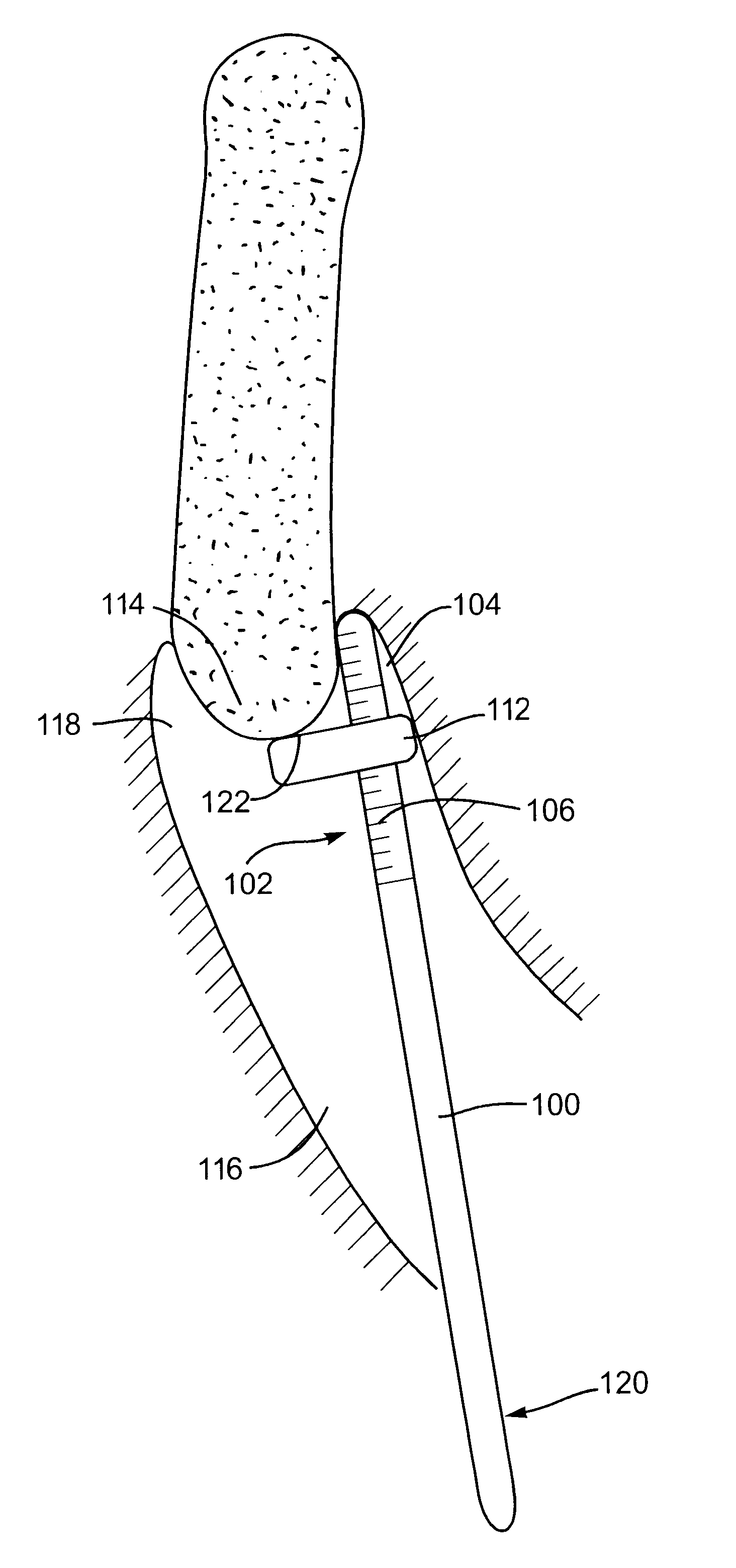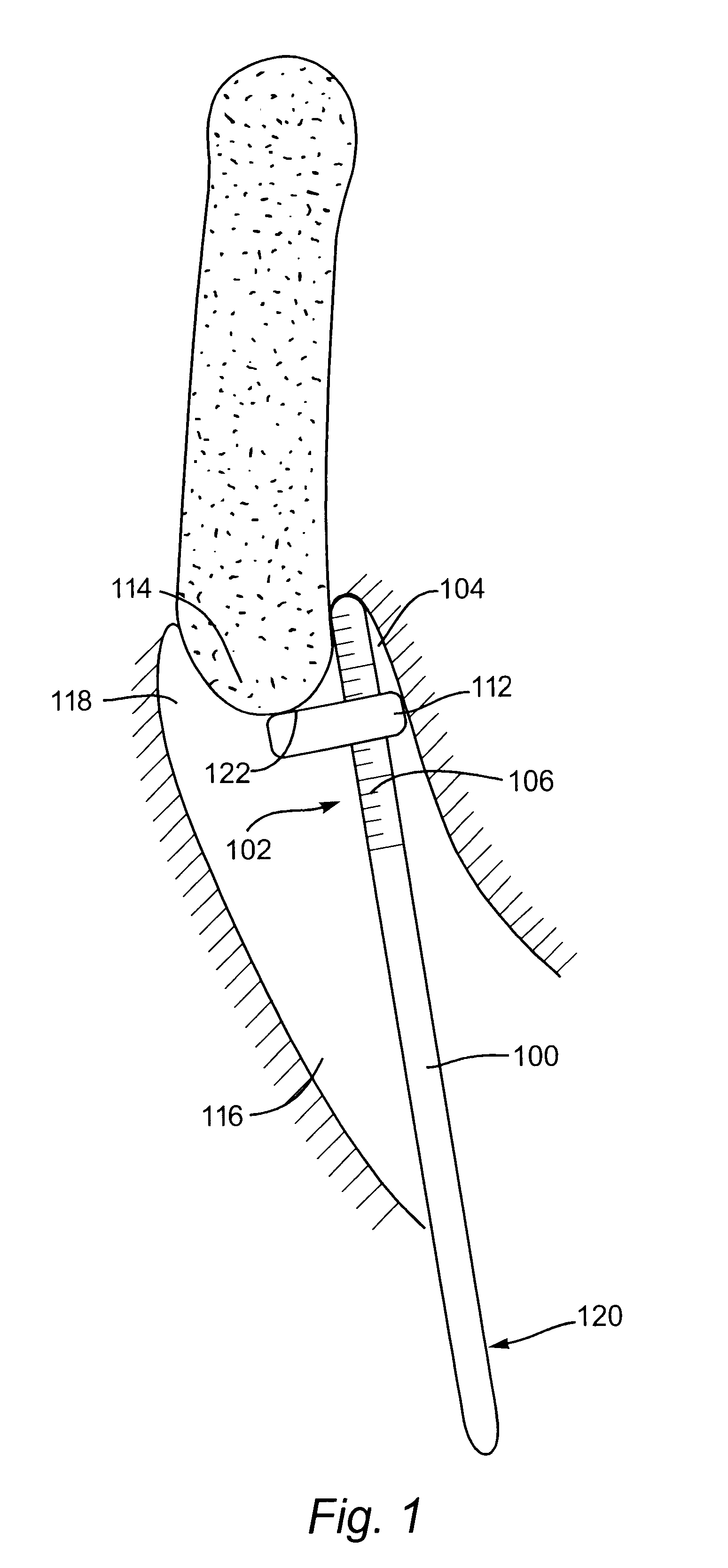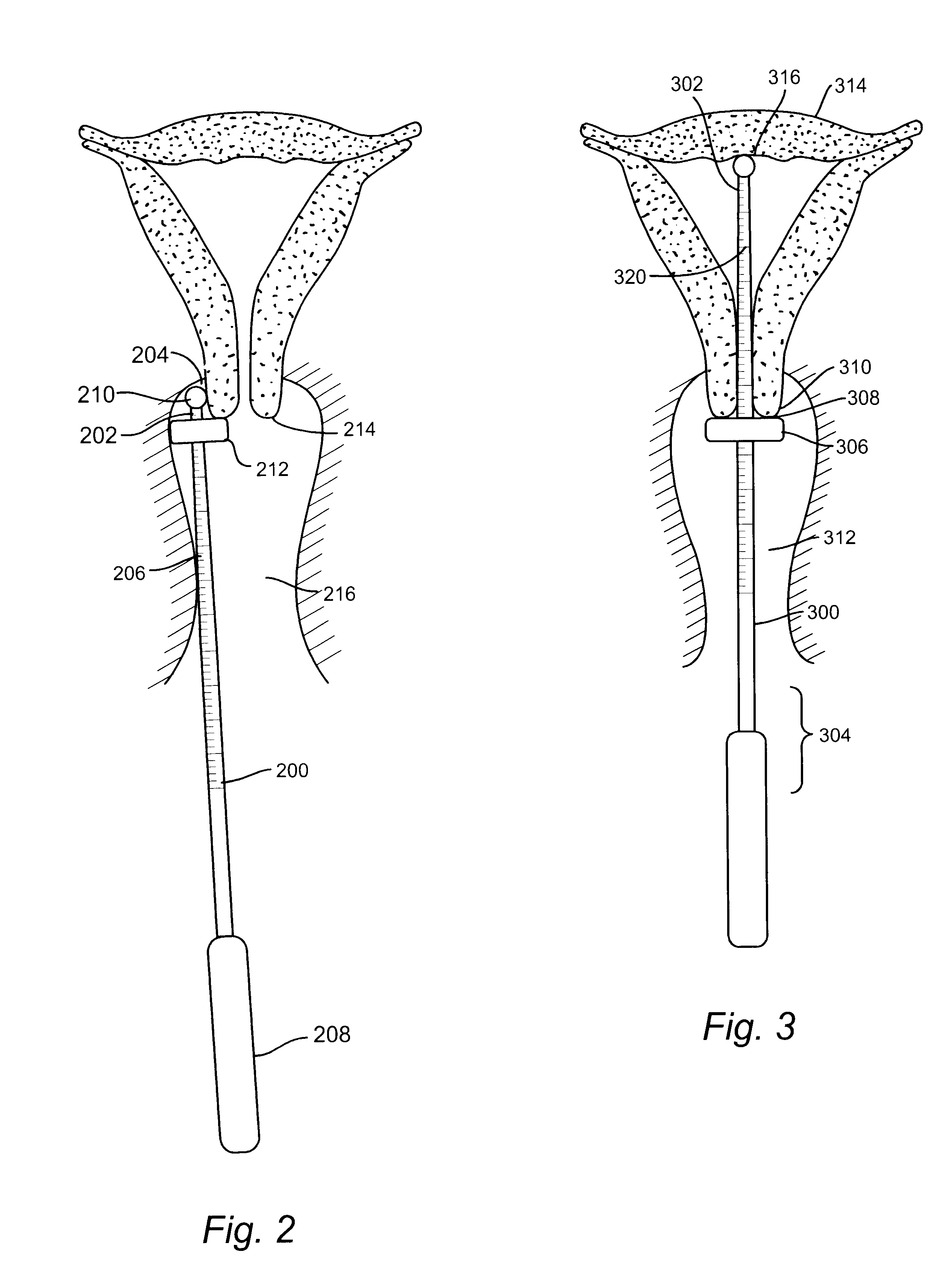Devices and methods for cervix measurement
a technology of cervix and measurement method, applied in the field of medical devices, can solve the problems of incompetence of the cervix, significant variation between practitioners, and inability to accurately measure the cervix
- Summary
- Abstract
- Description
- Claims
- Application Information
AI Technical Summary
Problems solved by technology
Method used
Image
Examples
example ii
Cervix Dilation Measurement
This example demonstrates the use of the invention disclosed herein to measure the dilation of the cervix uteri in the same subject as in Example 1, to predict the risk for preterm delivery or the particular stage of delivery in a normal pregnancy.
Using a device of the present invention to measure the dilation of the cervix uteri, the practitioner inserts into the vagina a device comprising, an elongated member having a distal region, a proximal region, and a bend in the elongated member at or near the distal region such that the distal region and the proximal region are approximately perpendicular to one another; a measuring scale on the distal region of the elongated member; and a stop slidably engaged with the elongated member on the distal region, the stop having a surface adapted to contact one side of the cervix uteri when the distal region of the elongated member is inserted into the vagina, until the stop contacts one side of the cervix uteri at or...
PUM
 Login to View More
Login to View More Abstract
Description
Claims
Application Information
 Login to View More
Login to View More - R&D
- Intellectual Property
- Life Sciences
- Materials
- Tech Scout
- Unparalleled Data Quality
- Higher Quality Content
- 60% Fewer Hallucinations
Browse by: Latest US Patents, China's latest patents, Technical Efficacy Thesaurus, Application Domain, Technology Topic, Popular Technical Reports.
© 2025 PatSnap. All rights reserved.Legal|Privacy policy|Modern Slavery Act Transparency Statement|Sitemap|About US| Contact US: help@patsnap.com



